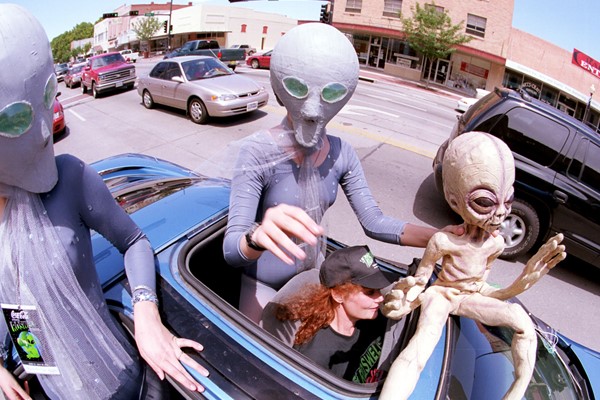The ‘panspermia’ theory could even help humans find signs of life on distant planets
There are plenty of theories about alien life in our universe, from the straight-up denial it exists, to the belief that its probes here on Earth. The only way we’ll know for sure is if we actually find some concrete evidence, and recently a group of scientists proposed a new method of speeding up the search.
The method revolves around a fairly fringe theory called “panspermia”. According to this hypothesis, life is distributed throughout the whole universe via asteroids, meteoroids, space dust, and contaminated spacecraft. It even throws the origin of life on Earth into question, proposing that important building blocks such as bacteria could have been transported from beyond the planet’s atmosphere, and ‘seeded’ the ecosystems we see today.
Many scientists are critical of the panspermia theory because it simply transplants the origin of life to a different place or time in the universe, and is practically unprovable by traditional scientific methods. Researchers Lana Sinapayen (National Institute for Basic Biology) and Harrison Smith (Earth-Life Science Institute) acknowledge this scepticism in their recent paper, published to the preprint database arXiv. However, they argue that “strong assumptions must be made about how life would manifest and interact with its planet” if we want to make any significant breakthroughs in detecting it.
With that in mind, they’ve developed a model of life spread via panspermia to reveal how – if the theory does prove true – it could help detect distant biosignatures. This is a difficult task, not least because we don’t know exactly what we’re looking for when it comes to alien life. From our own experience, we know that all living things are carbon-based and can be identified via a few shared characteristics, but it might not be the same everywhere in the universe.
The astronomers’ work aims to clear up this issue by focusing on what life would do to the planet it inhabits, rather than what any specific organism looks like. Earth, for example, looks much different with life on it than it would if it was just a barren wasteland. From space, our planet’s landmasses are much more green, while processes like photosynthesis mean that there’s much more oxygen in our atmosphere, which would be detectable from across the galaxy using the kinds of methods in its search for alien life on other planets.
Let’s assume panspermia is possible, and the seeds of life can travel between planets on rogue space rocks. In theory, a host planet would gradually adapt to newly landed lifeforms (a process called “terraformation”) and, in time, become more like the planet where they originated. According to Smith and Sinapayen, this would create clusters of similar planets that act as a “population-scale biosignature” – a prime target for further exploration.
I have seen no evidence for aliens and, with ~6000 satellites orbiting Earth, I think I would know
— Elon Musk (@elonmusk)
Again, all of this research is hypothetical, based on the assumption that panspermia is a valid theory. If correct, however, it would be an important step forward in our hunt for alien organisms, presenting an “agnostic” method of searching distant worlds that doesn’t depend on knowing what the aliens actually look like.
If that gives you hope for meeting little green men in your lifetime (or mysterious creatures beyond our comprehension) then read no further. This week, Elon Musk also shared some less optimistic thoughts on aliens, shooting down the possibility that they’re floating about in our galaxy. Responding to a theory shared by Tucker Carlson on an episode of Joe Rogan’s podcast, in which Carlson claims that supernatural entities are living , Elon took to Twitter on Monday (April 22) to write: “I have seen no evidence for aliens and, with ~6000 satellites orbiting Earth, I think I would know.”
As a founder of SpaceX who’s launched many thousands of Starlink satellites, Musk does, admittedly, have an edge when it comes to detecting signals from alien life. Nevertheless, his reluctance to confirm their presence in our little patch of the Milky Way comes as a surprise, because he usually the kinds of conspiracy theories shared by right-wing hacks like Tucker Carlson. Presumably, he just finds the racist “great replacement” hypothesis – a favourite of white nationalists and antisemites – more compelling than the untold wonders offered up to us by the glittering vault of deep space. Sad!
